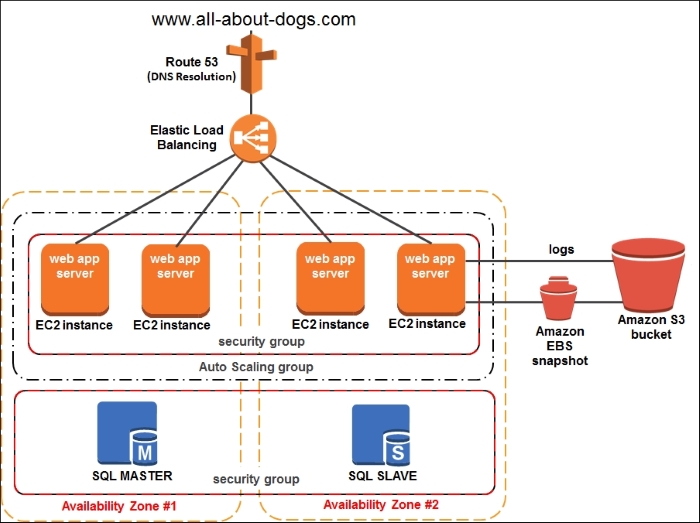For the purpose of this book, let's assume a simple use case in which a hypothetical company called as All About Dogs (not the best of names I could find) wants to host and manage their e-commerce website on the cloud. As a part of the hosting, the company would like to have the following feature set provided to them by the cloud provider:
High availability and fault tolerance
On-demand scalability
Security
Reduced management overheads and costs
Here is a simple, traditional architecture of the proposed website, which basically is a two-tier application primarily consisting of web servers and a backend database, something most IT admins will be familiar with, right? Let's look at the following figure of tradition web service architecture:

This traditional architecture has obvious drawbacks, such as poor scalability, little or no fault tolerance, more management overheads, and so on. Our goal is to leverage AWS's core services and make this obsolete architecture better! Each of the subsequent chapters will show you how to work with and administer these core AWS services keeping our use case in mind. By the end of this book, you should have a fully scalable, resilient, and secure website hosted on the AWS cloud with a design similar to this! Here is the AWS architecture:

Awesome, isn't it! Believe it or not, this is a bare minimum website hosting architecture on AWS. There are still many enhancements and AWS services that you could incorporate here, but I like to keep things nice and clean, so this is what we will stick with for the remainder of this book.
Here's a list of AWS products that we will be incorporating and primarily learning about throughout the book, apart from few other services:



